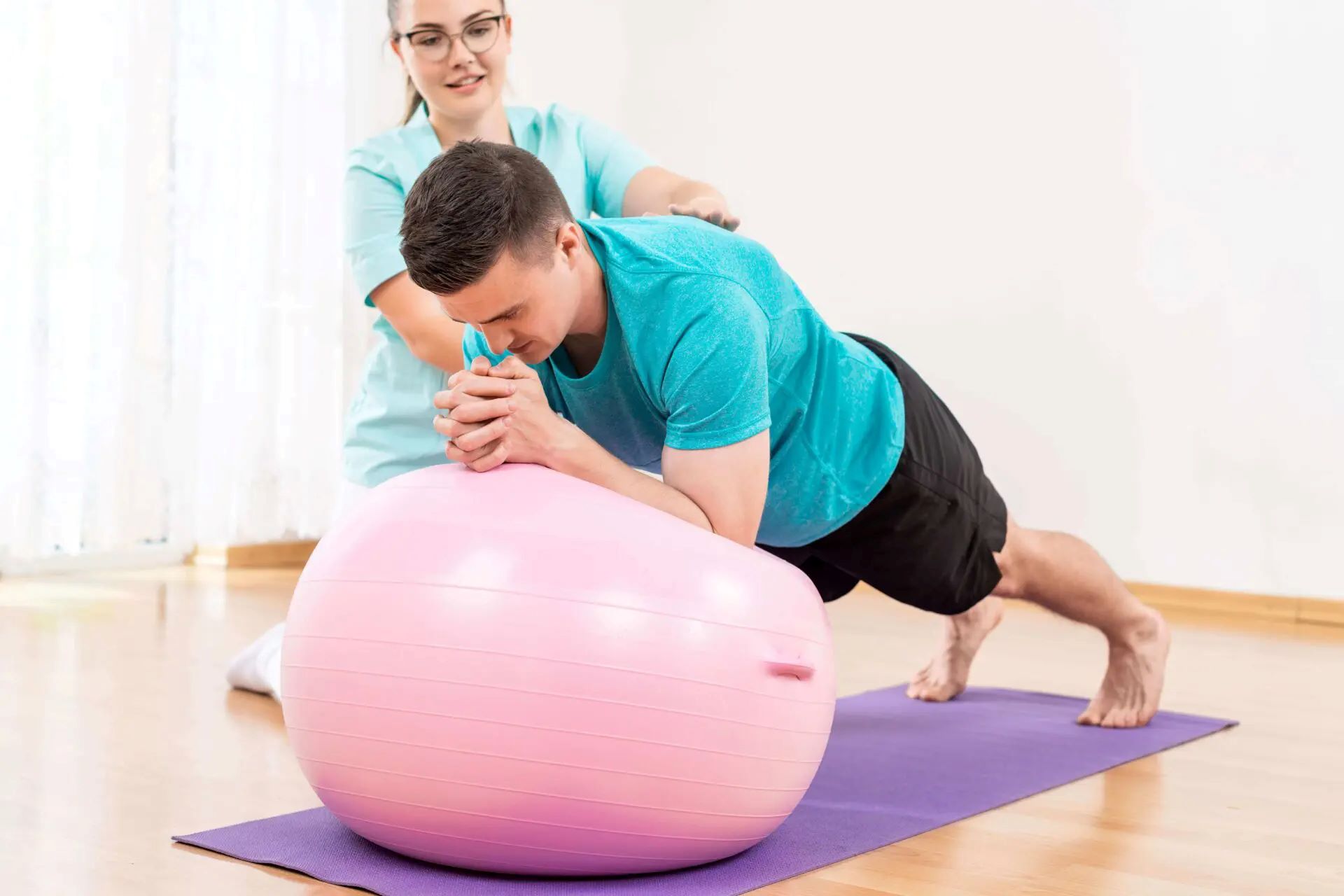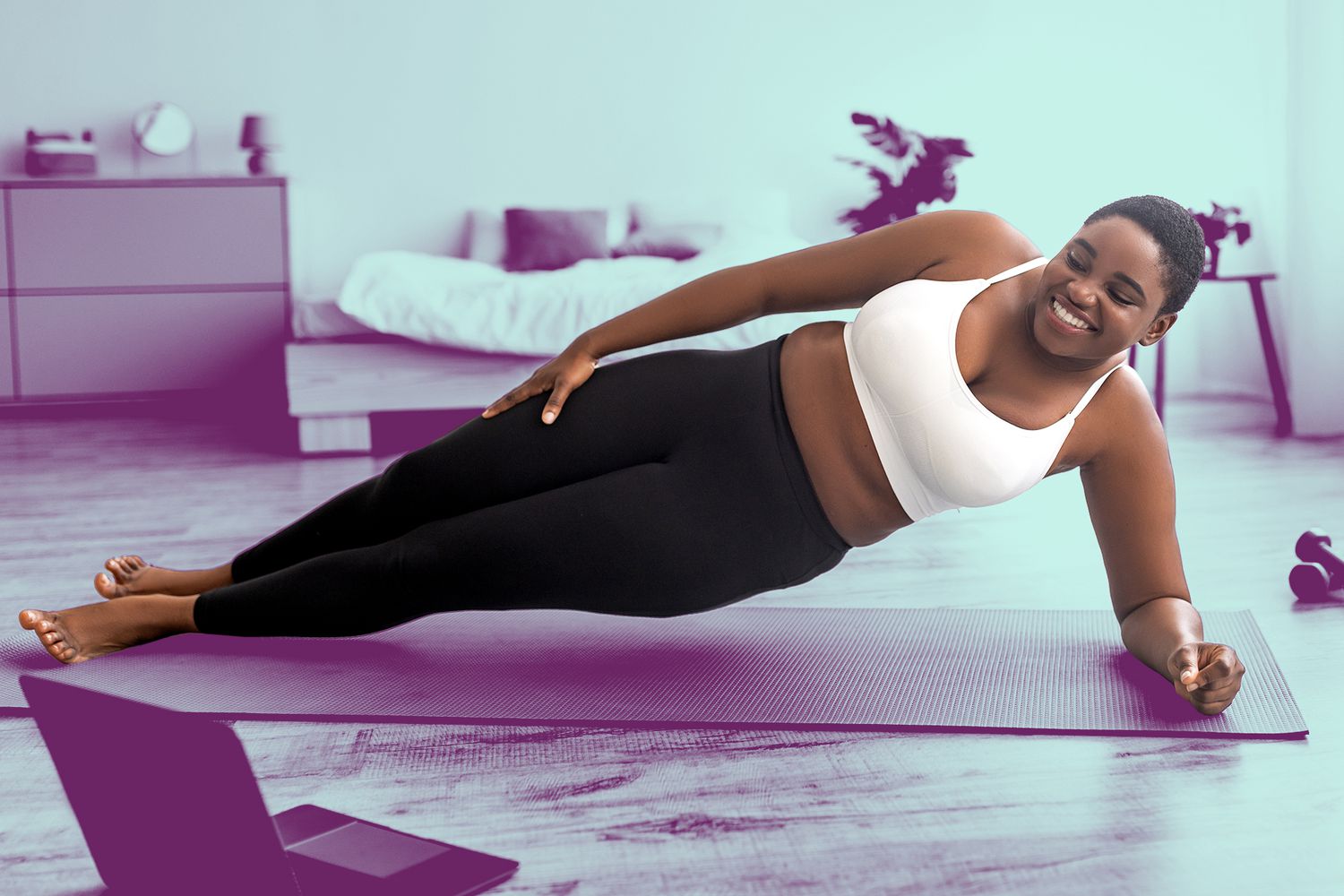

Featured
What Are Crunches Exercise
Published: October 8, 2023
Learn how to do crunches exercise properly and effectively. Featured tips and techniques for a stronger core and toned abs.
Introduction
Crunches are a popular and effective exercise for targeting the abdominal muscles. They are a staple in many fitness routines and can be performed by individuals of all fitness levels. Whether you’re aiming to strengthen your core, shape your waistline, or achieve those coveted six-pack abs, incorporating crunches into your workout regimen can help you reach your goals.
Unlike complex and equipment-heavy exercises, crunches require minimal space and no special equipment, making them convenient to perform at home or at the gym. Additionally, they can be modified to suit your fitness level and can easily be incorporated into any workout routine.
Crunches primarily target the rectus abdominis, which is the long muscle that runs down the front of your abdomen. When performed correctly, crunches help to strengthen and tone the rectus abdominis, improving core stability, posture, and overall strength.
In this article, we will dive into the proper technique for performing crunches, explore the benefits they offer, highlight common mistakes to avoid, discuss variations to challenge your muscles, and provide precautions and tips to maximize your results.
How to Perform Crunches
Crunches can be performed on a mat or on the floor. To ensure proper form and avoid straining your neck or back, follow these steps:
- Start by lying on your back with your knees bent and feet flat on the ground, hip-width apart. Keep your hands either crossed over your chest or touching your temples, avoiding pulling on your neck.
- Tighten your core muscles by drawing your belly button in towards your spine.
- Slowly lift your head, neck, and upper back off the ground, using your abdominal muscles. Keep your lower back firmly pressed into the floor.
- Exhale as you rise and inhale as you lower your upper body back down to the starting position, maintaining control throughout the movement.
- Repeat for the desired number of repetitions, aiming for a comfortable burn in your abdominal muscles.
Remember, the emphasis should be on using your abdominal muscles to lift your upper body, rather than relying on momentum or pulling on your neck. Focus on engaging your core throughout the exercise to maximize its effectiveness.
It’s important to note that everyone’s fitness level and range of motion will vary. If you are a beginner or have any existing back or neck issues, you may want to start with modified crunches, where you perform a smaller range of motion. Gradually increase the intensity as you become more comfortable and stronger.
Benefits of Crunches
Crunches offer numerous benefits for both your physical health and overall well-being. Here are some key advantages of incorporating crunches into your fitness routine:
- Core Strength: Crunches primarily target the rectus abdominis, the muscle responsible for flexing the spine. By regularly performing crunches, you can strengthen your core muscles, resulting in improved stability and balance.
- Toned Abdominal Muscles: By engaging the rectus abdominis, crunches help tone and define your abdominal area. This can lead to a more sculpted midsection and enhance the appearance of your waistline.
- Improved Posture: Strong abdominal muscles play a crucial role in maintaining good posture. Regularly practicing crunches can help strengthen your core, supporting proper alignment of the spine, and reducing the risk of developing poor posture habits.
- Injury Prevention: A strong core is essential for preventing injuries, especially in activities that involve lifting, twisting, or bending. By strengthening your abdominal muscles through crunches, you can enhance your body’s stability and reduce the risk of back and spinal injuries.
- Functional Movement: The core muscles play a vital role in everyday movements like standing, walking, and bending. By strengthening your core through crunches, you can improve your overall functional fitness, making everyday activities easier and more efficient.
- Increased Athletic Performance: Strong abdominal muscles are crucial for athletes in many sports. Whether you’re a runner, a golfer, or a tennis player, a strong core can improve your performance by providing stability, power, and agility.
- Mental Well-being: Regular exercise, including crunches, releases endorphins, also known as the “feel-good” hormones. Engaging in crunches can contribute to reduced stress, improved mood, and increased overall mental and emotional well-being.
Regardless of your fitness goals, incorporating crunches into your workout routine can provide you with a wide range of physical and mental benefits. Remember to prioritize proper form and gradually increase the intensity and duration of your crunches to achieve the best results.
Common Mistakes to Avoid
Crunches, when performed with proper form, can be incredibly effective. However, certain mistakes can diminish their effectiveness or lead to discomfort or injury. Here are some common mistakes to avoid when performing crunches:
- Using your neck muscles: Avoid pulling on your neck or using your neck muscles to lift your upper body. Instead, focus on engaging your core and using your abdominal muscles to perform the movement.
- Relying on momentum: It’s essential to maintain control throughout the exercise. Avoid using momentum to lift your upper body. Instead, focus on a slow and controlled movement, fully engaging your abdominal muscles.
- Not engaging the core: To get the most out of crunches, it’s crucial to consistently engage your core muscles. Throughout the exercise, actively draw your belly button towards your spine and keep your core tight.
- Flaring your elbows: Keep your elbows relaxed and avoid flaring them out to the sides. This can strain your neck and shoulders and shift the focus away from your abdominal muscles.
- Not breathing properly: It’s common to hold your breath during challenging exercises, but it’s essential to maintain proper breathing during crunches. Exhale as you lift your upper body and inhale as you lower it back down.
- Overarching your lower back: Avoid excessive arching of your lower back during crunches. Press your lower back into the floor or mat to maintain proper spinal alignment.
- Neglecting other core exercises: While crunches are an effective exercise, it’s important to incorporate a variety of core exercises into your routine. This helps to target all the muscles in your core for balanced strength and stability.
By being mindful of these common mistakes, you can optimize the effectiveness of your crunches, reduce the risk of injury, and ensure that you are working your abdominal muscles effectively. Focus on proper form, listen to your body, and gradually increase the intensity of your crunches over time.
Variations of Crunches
While traditional crunches are a great exercise for targeting the abdominal muscles, incorporating variations can add variety to your routine and help you continue making progress. Here are a few variations of crunches to try:
- Reverse Crunch: Lie on your back with your hands by your sides or under your glutes. Bring your knees towards your chest, lifting your hips off the ground and curling your lower back off the floor. Slowly lower your hips back down and repeat the movement.
- Oblique Crunch: Lie on your back with your knees bent and feet flat on the floor. Place your hands behind your head or across your chest. Twist your upper body, bringing your right elbow towards your left knee while extending your right leg. Alternate sides for each repetition.
- Bicycle Crunch: Lie on your back and place your fingers lightly behind your ears. Bring your knees towards your chest and lift your feet off the ground. Straighten your right leg while simultaneously twisting your upper body, bringing your left elbow towards your right knee. Repeat on the other side, alternating in a bicycling motion.
- Vertical Leg Crunch: Lie on your back with your legs extended towards the ceiling. Place your hands behind your head or by your sides. Lift your shoulder blades off the ground, reaching towards your toes. Lower your upper body back down with control and repeat the movement.
- Plank Crunch: Begin in a plank position, resting on your forearms and toes. Engage your core and lift your hips slightly, drawing your knees towards your chest. Return to the starting position, maintaining a strong plank. Repeat the movement for the desired number of repetitions.
- Weighted Crunch: Hold a dumbbell, medicine ball, or weight plate against your chest or behind your head while performing traditional crunches. The added resistance challenges your core muscles, increasing the intensity of the exercise.
By incorporating these variations into your routine, you can target different areas of your abdominal muscles and keep your workouts challenging and engaging. Remember to maintain proper form and perform the exercises at a pace and intensity that suits your fitness level.
Precautions and Tips
While crunches are generally safe for most individuals, it’s important to take certain precautions and follow these tips to ensure your safety and maximize the effectiveness of your workouts:
- Warm up: Prioritize a brief warm-up session before performing crunches. This helps to increase blood flow to your muscles and prepare them for the exercise.
- Proper form: Maintain proper form throughout the exercise to avoid straining your neck or back. Focus on engaging your core and using your abdominal muscles to lift your upper body.
- Start slowly: If you’re new to crunches or returning from an extended break, start with a lower number of reps and gradually increase as your strength improves.
- Listen to your body: Pay attention to your body’s signals. If you experience pain, discomfort, or dizziness during crunches, stop immediately and consult with a healthcare professional.
- Breathe: Remember to breathe throughout the exercise. Exhale as you lift your upper body and inhale as you lower it back down.
- Include variety: Combine different types of crunches and include other core exercises in your routine to target all areas of your abdominal muscles and prevent muscle imbalances.
- Rest and recovery: Allow your muscles to rest and recover between workout sessions. Aim for at least one day of rest between abdominal workouts.
- Stay hydrated: Drink plenty of water throughout the day and especially before, during, and after your workout to stay properly hydrated.
- Consult a professional: If you have any existing health conditions or concerns, it’s advisable to consult with a certified fitness professional or healthcare provider before starting a new exercise program.
By following these precautions and tips, you can perform crunches safely and effectively, reducing the risk of injury and maximizing the results of your workouts. Remember to always prioritize your safety and listen to your body’s needs.
Conclusion
Crunches are a versatile and effective exercise for targeting the abdominal muscles and improving core strength. By incorporating proper form, variations, and following essential precautions, you can reap the benefits of this exercise while minimizing the risk of injury.
Remember to engage your core, focus on a slow and controlled movement, and avoid common mistakes such as using your neck muscles or relying on momentum. Gradually increase the intensity and duration of your crunches over time to continue challenging your abdominal muscles.
Regularly performing crunches can lead to a toned midsection, improved posture, enhanced athletic performance, and reduced risk of injuries. However, it’s important to combine crunches with a balanced workout routine that includes other core exercises and strength training for a well-rounded fitness program.
Always listen to your body and consult with a healthcare professional if you have any concerns or existing health conditions. With patience, consistency, and proper technique, you can harness the power of crunches to strengthen your core and achieve your fitness goals.
So, start incorporating crunches into your workouts and enjoy the benefits of a stronger, more defined midsection. Get ready to rock those six-pack abs or simply improve your overall core stability and functional fitness!









